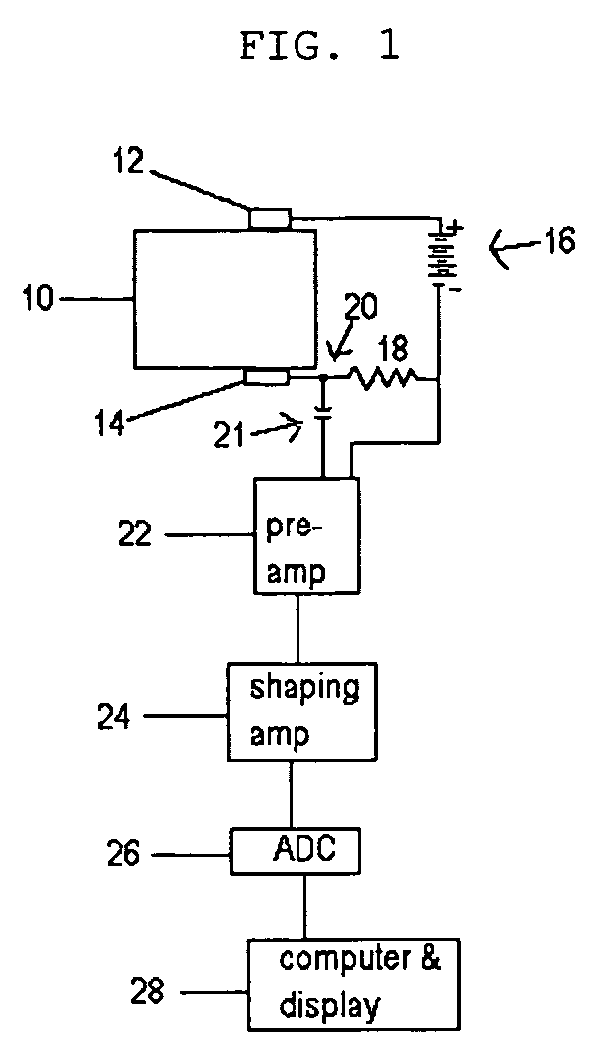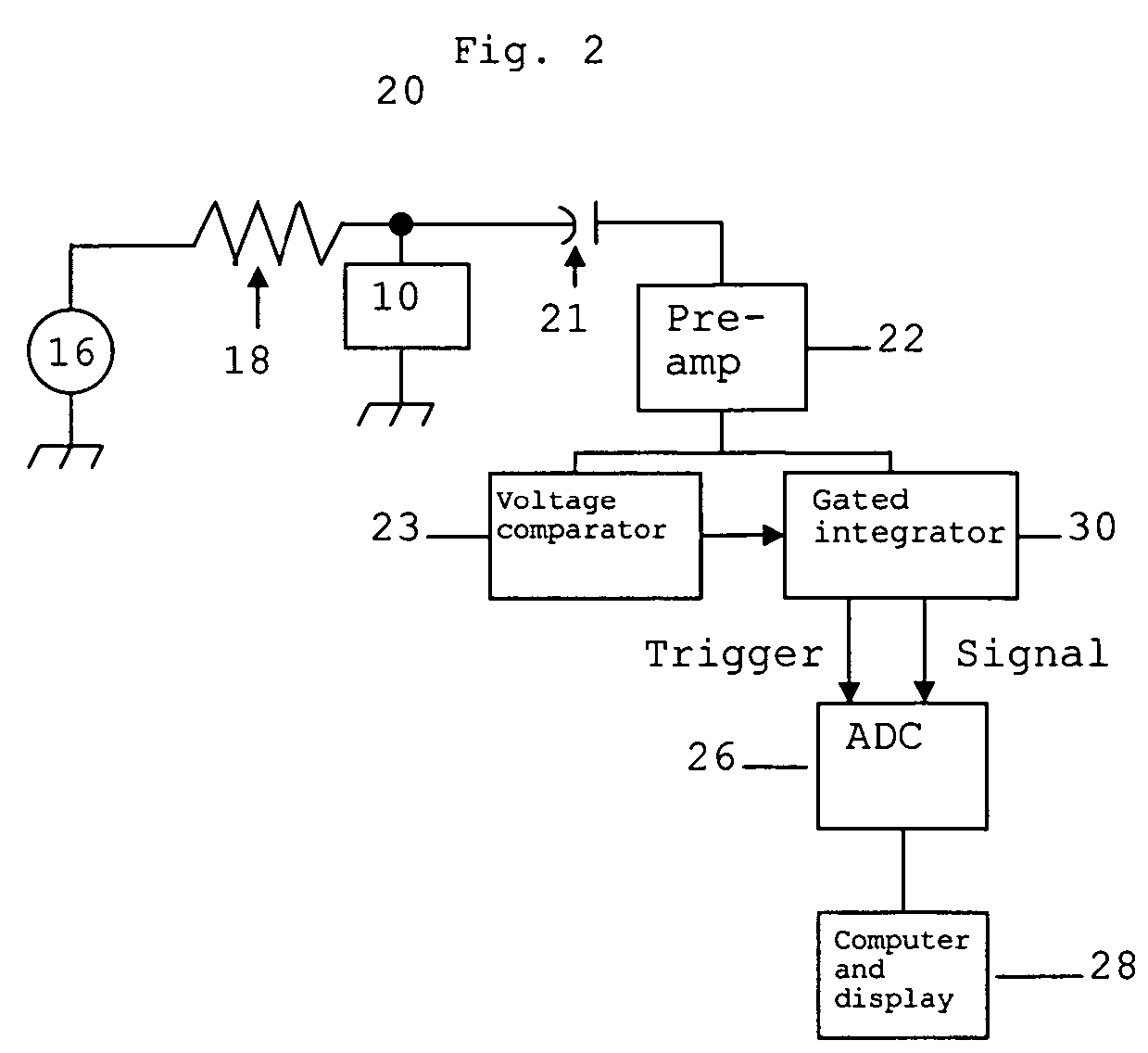Semiconductor radiation detector
a radiation detector and semiconductor technology, applied in the field of radiation detection, can solve the problems of polycrystalline ingots with twins, inclusions, grain boundary defects, and one or more drawbacks regarding their use,
- Summary
- Abstract
- Description
- Claims
- Application Information
AI Technical Summary
Problems solved by technology
Method used
Image
Examples
Embodiment Construction
[0011]The detecting element is comprised of a compound having the composition I-III-VI2 or II-IV-V2 where the “I” component is from column 1A or 1B of the periodic table, the “II” component is from column 2B, the “III” component is from column 3A, the “IV” component is from column 4A, the “V” component is from column 5A, and the “VI” component is from column 6A. A more concise manner of description is that the crystal is formed from elements in the group of 1A-3A-6A, 1B-3A-6A or 2B-4A-5A of the periodic chart. An example from group 1A-3A-6A is Lithium-Gallium-Selenium. An example from group 1B-3A-6A is Copper-Gallium-Selenium. An example from group 2B-4A-5A is Cadmium-Germanium-Antimony. Crystals formed from groups 1B-3A-6A and 2B-4A-5A are chalcopyrites. The detecting element detects ionizing radiation by generating a signal proportional to the energy deposited in the element, and detects neutrons by virtue of the ionizing radiation emitted by one or more constituent materials subs...
PUM
 Login to View More
Login to View More Abstract
Description
Claims
Application Information
 Login to View More
Login to View More - R&D
- Intellectual Property
- Life Sciences
- Materials
- Tech Scout
- Unparalleled Data Quality
- Higher Quality Content
- 60% Fewer Hallucinations
Browse by: Latest US Patents, China's latest patents, Technical Efficacy Thesaurus, Application Domain, Technology Topic, Popular Technical Reports.
© 2025 PatSnap. All rights reserved.Legal|Privacy policy|Modern Slavery Act Transparency Statement|Sitemap|About US| Contact US: help@patsnap.com



